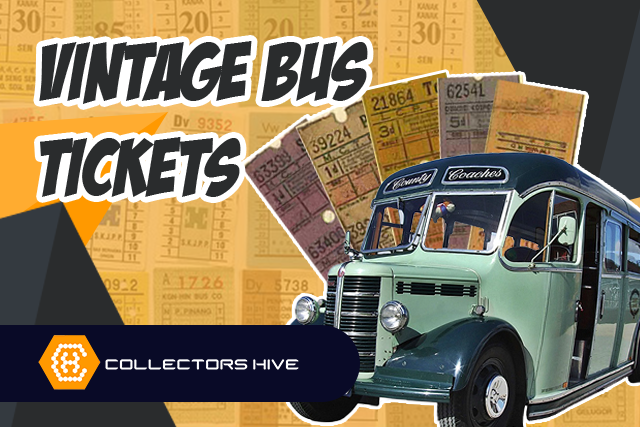This page features a few items from a collection Mr. Dick Gilbert assembled at the time and is about British bus tickets from the 1950s and 1960s. For those visitors who recall such things, we hope it brings back some memories of those times.
LONDON TRANSPORT
I began saving bus tickets in 1958, just like some students did. Sadly, yes. It was, after all, an inexpensive job. The instances of London Transport are the most frequent because I was living in Croydon at the time. I surprisingly still have them, and here are few examples of them.
All of them are, of course, pre-decimal money, and the most of them are Bell Punch coins, which, at the time, I was unaware of, were about to be phased out of circulation in London.
The first tickets to vanish were the penny tickets (sample in the row below), perhaps as a result of inflation! When schoolchildren added the numbers at the top of each ticket, a total of 21 was seen as lucky, Matt Wharmby recalled me.

Although the numbers in the next row are higher, they were all standard equipment on London (red) Central Area buses in the late 1950s. The 10d (ten old pence for our younger readers, assuming any make it this far!) is an anomaly. It is a Sunday Morning Cheap Single and has an outlandish color scheme. The “lucky” ticket is the 8d one! Additionally, Matt informed me that the letters at the top were considered to be “fortune tellers” in some youthful groups. It seems that the letters may represent the initials of the spouse you were about to marry, and if the ticket also happened to be “lucky,” you were meant to deliver it to the recipient. This is your big break, Debbie Underwood.

The buses in the row below (6d to 1/2d) all hail from the Country Area (green) and have much more vibrant graphics and higher fare amounts. In fact, because people preferred to take rural buses farther, they were frequently charged higher fares as well. Another ‘lucky’ ticket is the 10 cent one.

The ‘Red Rover’ ticket is the first oddity in the little collection of London Transport items below. With this, the holder was permitted to travel for a set price on Central Area buses, trolleybuses, and the Underground for just one day. It states “Child – under 14 years of age,” yet I wasn’t! That day, I was out looking for the final Leyland TD single deckers.
(In March 2014, Peter Webb emailed to say, “Excellent site, brought back many memories of my younger days collecting bus numbers in and around Walthamstow with my Ian Allan book. Just one small point – in the section about tickets, you mention the Red Rover ticket. Please note this was for buses only; to use the Underground as well, you had to get a ticket called the Red Rover Plus.

A 3/8d Green Line coach ticket from a ‘new-fangled’ Setright machine is located below it. Early Morning Single (4D) tickets have a low price for early risers. A 1/- Underground ticket labelled “3rd Class” is displayed on the right (Paul Kirkup emailed me to confirm that there was in fact a first class service on the Metropolitan Railway, the Underground’s pre-war precursor). Finally, here are a few vintage adverts that were frequently found on bus tickets.
EASTBOURNE CORPORATION
My family relocated to Eastbourne in 1959, therefore it was only natural for my collection to have a sizable number of items from that beach city. Bus tickets from the Eastbourne Corporation were much more colorful and slightly bigger than those from London.
I had the good fortune to receive a full set of “mint” tickets from the Corporation for a reason that I can’t recall. Perhaps it served as an incentive to get me to leave their garage. In any case, the majority of the tickets below are devoid of the “hole” that would typically have been created by the Bell Punch machine.
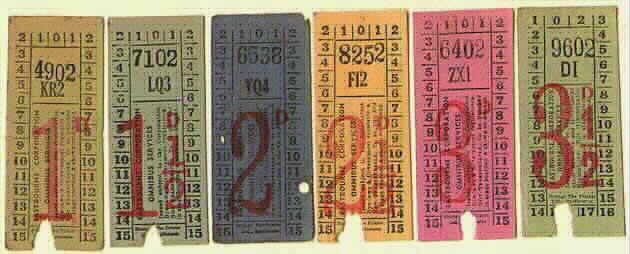

Aren’t they clever? Return tickets were all striped and had the odd feature of listing the round-trip routes that they could be used on. The entire collection is displayed here, along with another peculiar element in the form of a “Exchange Ticket.” In exchange for the passenger’s return ticket for the return trip, this was provided to him (at no cost). Does anyone know of any other locations using this system?

Here are a few oddities from Eastbourne. Before 8:30 in the morning, the Workmen’s Returns on the left had to be issued. If you lived farther than a specified distance from your school, school tickets were provided in booklets (I still have one). Kids in Eastbourne used unused ones as cash. The most uncommon ticket is certainly the one on the right. It is really authentic and, from what I can tell, dates to the 1930s or perhaps earlier.
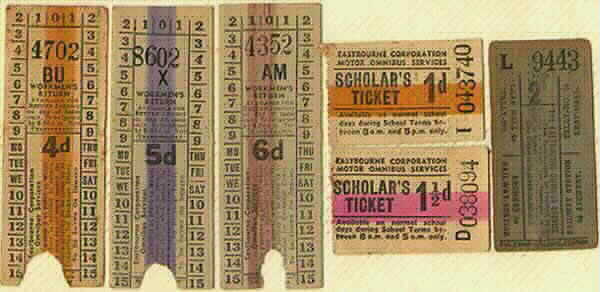
Here is the enormous “Town and Shore” ticket to finish the set. You could get around town as much as you wanted for two shillings, but just for a half-day. It’s difficult to think of a situation in which this was a decent deal.
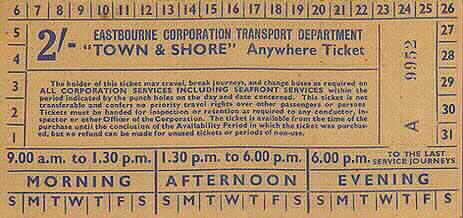
SOUTHERN SELECTION
Before switching to new machines and “Olley” tickets about 1960, Brighton Corporation (on the left) utilized Bell Punch tickets. Similar Bell Punch tickets were used by Brighton Hove and District (on the right), although Setright devices were later used.

The exotic return tickets, one of which is illustrated here, were used by Aldershot and District and were printed on thick card. On both trips, they received validation—once at each end. The mauve single ticket was for half pence and had a dull pink 1/2 (half) written on it (if you can’t see it, you’ll have to believe me!). As a result, if you wanted a one penny fare, you received a white ticket with the number one printed on it; but, if you wanted a “penny halfpenny” fare (one and a half old pence), you received a mauve ticket with the number one stamped on it.
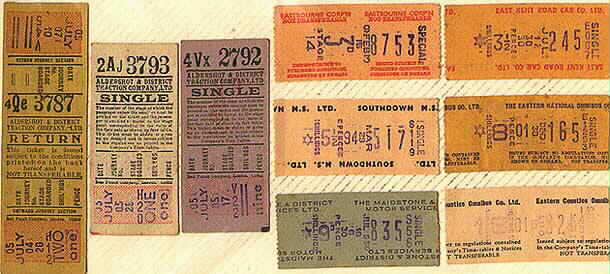
Aldershot eventually switched to Setright equipment, as did many other southern operators. Examples from Eastbourne, Southdown, Maidstone & District, East Kent, Eastern National, and Eastern Counties are displayed above to the right.
The ‘wrinklies’ among us may think these tickets are current, but keep in mind that these are all pre-decimal bills that are at least 50 years old.
MIDLANDS SELECTION
The Setright machine was widely used in Britain in the early 1960s; the Trent, Ribble, East Midland, and Midland Red models below left are from those companies, and their tickets had pink backs. However, as seen by the specimens below right, Nottingham escaped this tendency.

NORTHERN AND SCOTTISH SELECTION
Examples from Manchester (MCTD) may be seen on the left. The LCPT is from Liverpool (top, center). Here is an illustration from the charmingly called Stalybridge, Hyde, Mossley and Dukinfield Joint Transport and Electricity Board, which will no doubt become a collector’s item. Finally, we arrive in Scotland with several samples from Alexanders and Dundee Corporation. This section of Walter Alexander and Sons—I believe it was called Fife—had multiple subsidiaries, which explains the ‘(F.)’ in the name. This one was a bit of a rarity for a Sassanach, so I was quite happy to get it.

Well, that’s a little sample from my collection and I hope you enjoyed the ride.
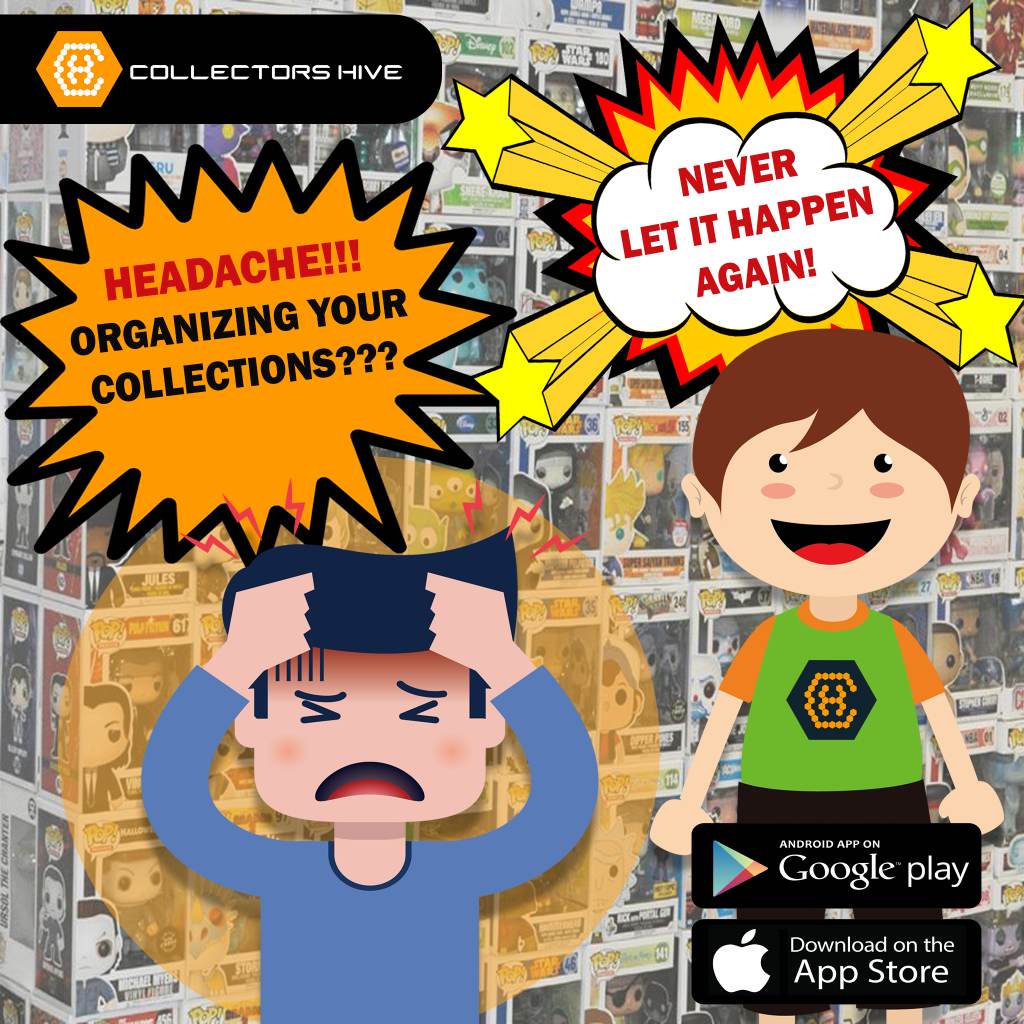
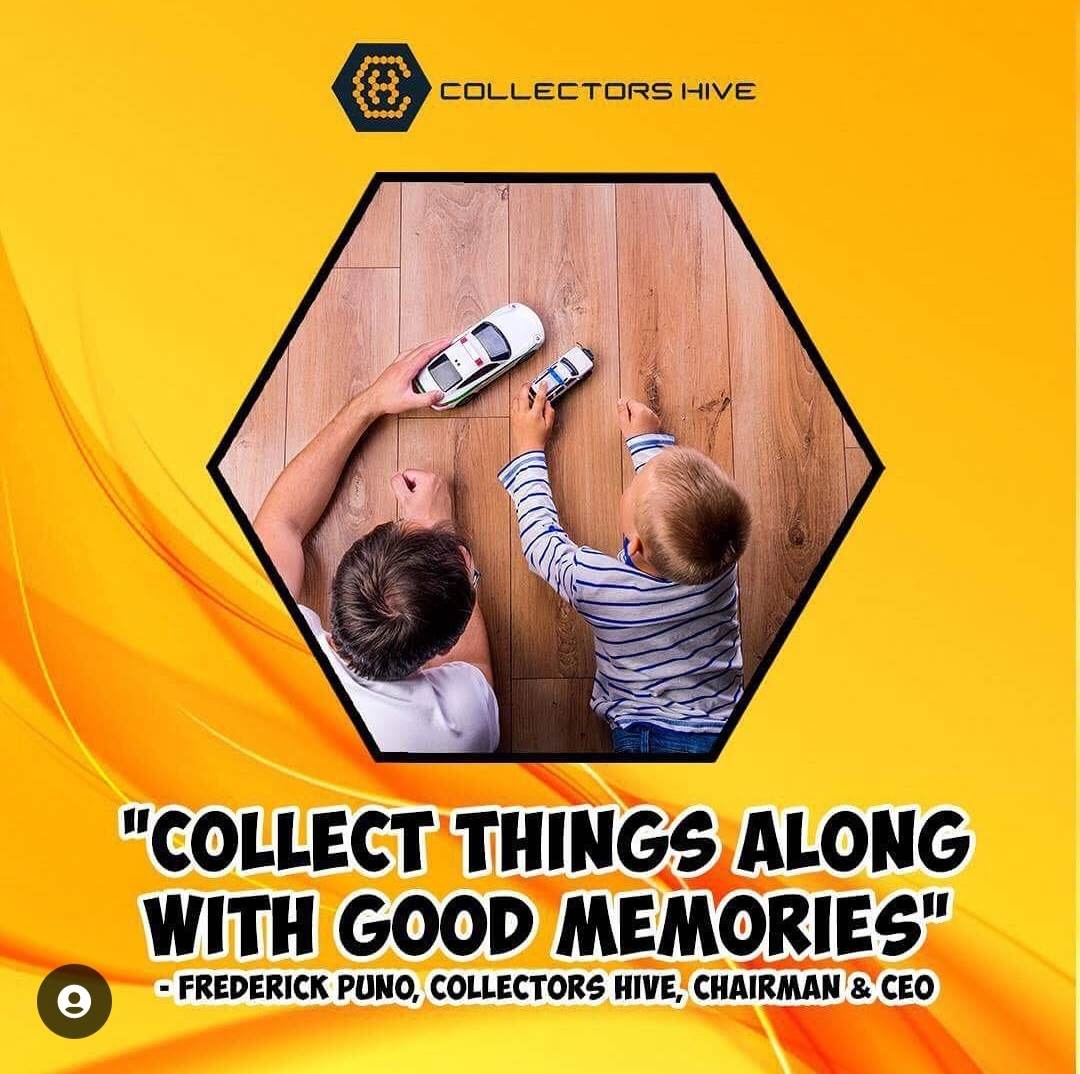
Source:
https://www.classicbuses.co.uk/Tickets.html
Download App:
https://play.google.com/store/apps/details?id=com.collectorshive&hl=en
